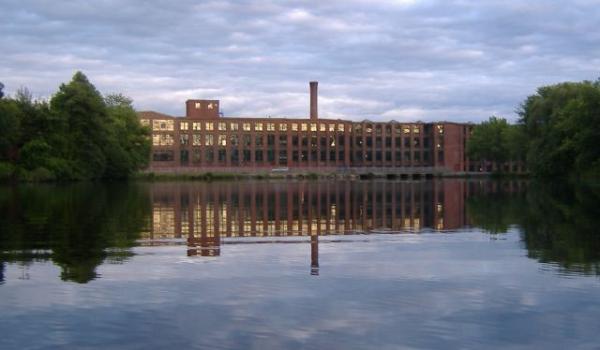Universalist Heritage Tour Comes to Hopedale
by Marcia Matthews
The
Universalist Heritage Foundation
"New England in Autumn Tour"
featured Hopedale as a stop on their itinerary. On September 26, Elizabeth
Strong and seven guests enjoyed a luncheon at Hopedale Unitarian Parish
catered by Michele Alves. HUP interim minister Beverly Waring and Friends of
Adin Ballou program director Marcia Matthews welcomed visitors from
Michigan, New Hampshire, New York, and Washington State to experience our
community, among other prominent New England sites.
While the guests enjoyed artisan
bread from Whole Foods, fresh salad, hearty pumpkin soup, and chocolate chip
cookies, Hopedale historian Dan Malloy fielded their questions about the early
Hopedale utopian community, and how it differed from Brook Farm and
Fruitlands; also about the split between Adin Ballou and the Draper
industrial family. Patricia Hatch discussed the religious distinctions among
the Universalists, Unitarians, and Practical Christians, and where Adin
Ballou fit. Although his 14-year experiment ended in dissolution, it was not
a failure because he was able to write books about it and create a blueprint
for the future.
The next stop was Adin's house on Dutcher Street, where Adin
lived and worked. Jeanne Kinney spoke about Assumption Professor Emeritus
Michael True's writing on the Ballou-Tolstoy-Gandhi-King connection. The
group proceeded to Adin Ballou Park, where four new sugar maples are
starting to turn crimson, to contemplate his statue and reflect on his
ideals. Next stop was the Bancroft library, where the Statue of Hope offers
inspiration, and the desk of Adin Ballou, his traveling trunk and his
children's cradle evoke the man. With their heads full of high ideals, the
group returned to HUP to purchase books and souvenirs.
In contrast, the gloomy Draper factory, abandoned since 1975, casts a shadow
over Hopedale Street. The Red Shop prepares for Oktoberfest, a drinking
celebration of which Adin Ballou would not have approved. The Grafton &
Upton railroad begins freight service on October 1, with commuter rail a
future goal. Hopedale's two disparate elements still run on separate tracks.
The challenge is still to keep Adin's legacy of peace, freedom and
temperance alive in modern times.

|

